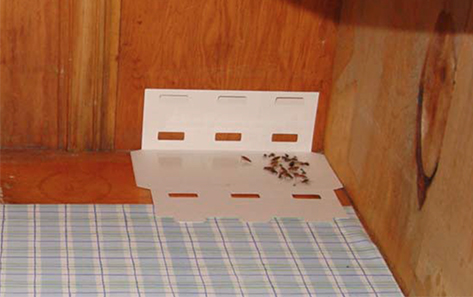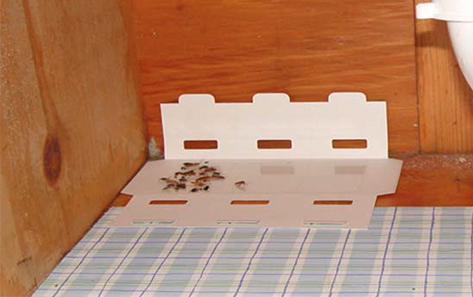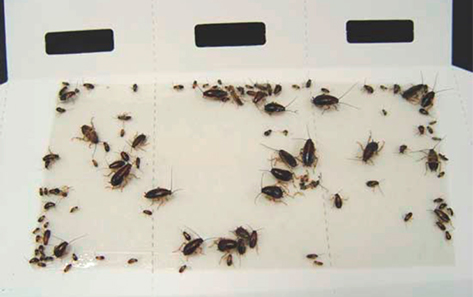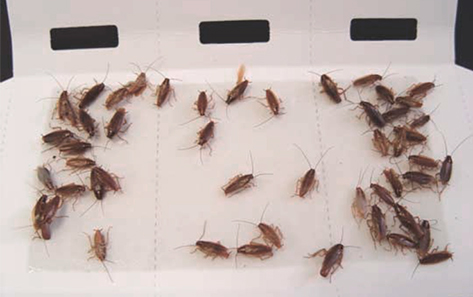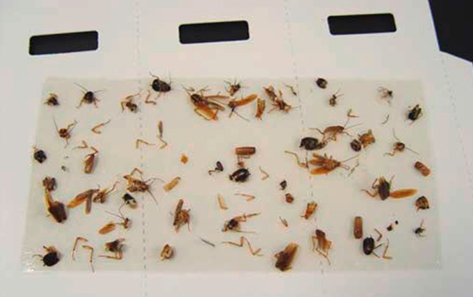Reading Roach Traps for German Cockroach Management
The use of monitor traps (i.e. ‘sticky traps’, ‘roach traps’, glue boards) to detect and monitor cockroach activity is required in today’s modern IPM program. Sticky traps gather cockroach activity data 24/7.
Although monitor traps are simple in design, PMPs should follow these guidelines to receive the full benefit of these devices:
// Place traps as close as possible to known or suspected harborages. Use the concept of ‘Zone Management’ to concentrate efforts where roach activity has been observed or is highly likely.
// Place traps along roach ‘routes of travel’, along walls and in corners, between harborages and resource (food and water) sites.
// Place traps in areas where incoming goods that may be infested with roaches are first received or stored in your accounts.
// Keep traps dry and clean (dust-free). Roaches weigh very little; a small film of moisture or dust will render a trap useless. If necessary, place traps inside small rodent bait boxes to avoid exposure to moisture and dust.
// Don’t be stingy. Use a sufficient number of traps to accurately monitor the entire account. Traps are inexpensive for the information they collect. Once a trap has ‘captured’ roaches, it should be replaced.
// It is highly recommended that all traps be dated to evaluate the level of activity based on time. Record the location and level of activity. A trap placement/locator map is helpful if multiple parties service and/or inspect the roach activity.
// Wherever possible, remove traps prior to inspections by health agents or associated inspectors. The presence of captured roaches may be recorded as a violation.
// Sticky traps capture more than cockroaches. Use trap findings to monitor and record the presence of other pests such as ants, flies and spiders.
How to read roach traps
The physical presence of a cockroach on a monitor may be significant enough to initiate an action plan. However, the experienced IPM practitioner will be able to interpret more than just positive activity from their monitors.
Some examples:

